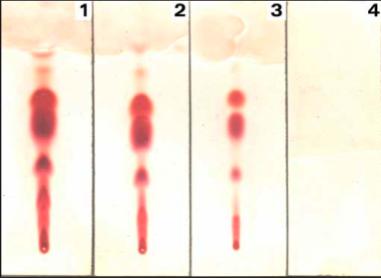@ all,
Here are needed papers and info (#1 thru #3) for testing with TLC and using spot density measurement. Also covered in #2 is GC, HPLC, etc.
As I wrote above, TLC can be either comparative (without standards) or quantitative (with standards); but HPTLC (or OPLC) is better for quantitative planar chromatography. These papers (#2 and #3) are my main resources for the methodologies I have been working on, along with JustTLC. I plan to use Fast Blue BB salt as the stating/visualization reagent and extra preservative step.
1. JustTLC software
http://www.sweday.com/Products.aspx
2. "Recommended methods for the identification and analysis of cannabis and cannabis products"
United Nations Office on Drugs and Crime (UNODC) 2009
http://www.unodc.org/documents/scientific/ST-NAR-40-Ebook.pdf
3. (uploaded) "PHG 414 Practical course: Detection of Cannabis in samples of different sources"
4. "Comparison of three advanced chromatographic techniques for cannabis identification"
http://www.unodc.org/unodc/en/data-and-analysis/bulletin/bulletin_1994-01-01_2_page009.html
5. "TLC Testing Protocol, 2009"
http://www.democitydrug.org/uploads...rotocols/ENERGY CONTROL TLC protocol 2009.pdf
6. "Quantitative Chromatographic Analysis"
by Raymond P. W. Scott, part of the Chrom-Ed Series
http://www.chromatography-online.org/quant/contents.html
Here are needed papers and info (#1 thru #3) for testing with TLC and using spot density measurement. Also covered in #2 is GC, HPLC, etc.
As I wrote above, TLC can be either comparative (without standards) or quantitative (with standards); but HPTLC (or OPLC) is better for quantitative planar chromatography. These papers (#2 and #3) are my main resources for the methodologies I have been working on, along with JustTLC. I plan to use Fast Blue BB salt as the stating/visualization reagent and extra preservative step.
1. JustTLC software
http://www.sweday.com/Products.aspx
^^^ software for spot density measurement for quantitative, or comparative results.
2. "Recommended methods for the identification and analysis of cannabis and cannabis products"
United Nations Office on Drugs and Crime (UNODC) 2009
http://www.unodc.org/documents/scientific/ST-NAR-40-Ebook.pdf
^^^ that paper is neat as it discuses feminzed seeds, etc., besides it's value for TLC, HPLC and GC assays, etc. This paper should be a main go-to resource.
3. (uploaded) "PHG 414 Practical course: Detection of Cannabis in samples of different sources"
^^^ that paper is a good resource, along with the one above, when one is developing testing methodologies, ex., this paper is good for info on TLC (replacing hexane might be a good idea, fwiw).
4. "Comparison of three advanced chromatographic techniques for cannabis identification"
http://www.unodc.org/unodc/en/data-and-analysis/bulletin/bulletin_1994-01-01_2_page009.html
^^^ and older (1994) paper by the UN about TLC vs. GC vs. HPLC; the info isn't wholly accurate today with the advancement of TLC and HPTLC, but it's still a good read.
5. "TLC Testing Protocol, 2009"
http://www.democitydrug.org/uploads...rotocols/ENERGY CONTROL TLC protocol 2009.pdf
^^^ a good, basic intro into TLC
6. "Quantitative Chromatographic Analysis"
by Raymond P. W. Scott, part of the Chrom-Ed Series
http://www.chromatography-online.org/quant/contents.html
^^^ an older series that is not wholly accurate for today's TLC, HPTLC, etc., ex. using spot density measurment isn't covered. But it does have some worthwhile info.

 ....good info
....good info




